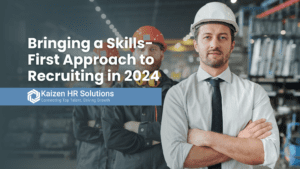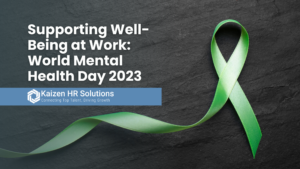Change is a necessary part of life for every company, but figuring out just how to achieve necessary and positive change can be a major challenge. The secret that the top companies know? The route to lasting change is a slow and steady marathon, not a sudden sprint.
The Perils of Top-Down Change
For many leaders, the instinct may be to blaze in and try to make big, institutional changes as soon as possible. This is especially true for leaders who have been hired specifically as “transformative” leaders to revamp company culture, particularly those in HR and related fields.
Whether these leaders attempt to make changes by pure “edict” or by ordering big-picture structural changes right away, typically the result is the same. Top-down change usually fails because it only manages to address the surface-level issues, leaving the actual culture – the shared norms, beliefs, habits, and assumptions – unchanged. Leaders who believe that all they need is willpower will generally fail at making the kinds of cultural change necessary to truly shift an organization in a positive direction.
While leadership does matter, it can’t be a “royal command,” so to speak. When it comes to making real change at a company – and making shifts that will last, not just until everyone’s attention goes elsewhere – it has to be approached with an eye towards longevity and bringing input into the decision-making process. Change management must be tailored to the unique needs of each individual organization and its people; otherwise, it’s not likely to succeed.
Making Change in Small Steps
The logical alternative to enormous, top-down change, then, is addressing change in smaller steps and in a more organic way. Instead of big, flashy initiatives, this approach focuses on the micro level: individual actions, small moments, and specific interactions all become vectors for moving the needle towards the desired goal. After all, people are often creatures of habit, and big changes all at once can be unsettling and lead to resistance, whether intentional or not. Slower, more gradual change allows for shifts to happen while allowing everyone time to adjust and adapt, making it more likely that the changes will stick.
One model that has stuck around for some time, known as the “influence model,” focuses on four key components for making lasting change. According to McKinsey, these four “building blocks” are:
- Fostering understanding and conviction
- Reinforcing changes through formal mechanisms
- Developing talent and skills
- Role modeling
Each of these individual components expands to include numerous possible actions and priorities that leaders can take. For instance, as part of “fostering understanding and conviction,” leaders may work on communications with employees, allowing them to understand the “why” behind the changes and inviting them to contribute their own feedback along the way. As part of “developing talent and skills,” a company might go beyond just offering skills and career development training and highlight how those new skills can make a difference for both the individual and for the company.
These smaller changes add up – and, more importantly, they lay the foundation for structures designed for continuous improvement and ongoing change, rather than seeing “transformation” as something one-and-done. Research by the BCG Henderson Institute found the following:
- In the short term, the most successful companies were the ones that “articulated a compelling story to reset investor expectations” while simultaneously addressing efficiency.
- In the longer term, successful companies took actions (like increased spending on research and development) geared at increasing revenue growth.
- The companies that formalized their transformation programs and actively invested in them were more successful that those that did not.
- Transformations “initiated preemptively, rather than reactively” resulted in better performance.
Having the Right CHRO
As with any new initiative, having the right leadership in place can make all the difference. HR leaders are positioned to have real influence over company culture, especially when they wield that influence strategically.
When leaders model the kind of change they want to see, others follow suit. It’s personal interactions, not big plans and vague language, that make a real difference. Getting buy-in at all levels, helping team members understand and see their own needs reflected, and reinforcing all of these things with clear mechanisms may not seem glamorous, but they’re the stuff of which long-lasting change is made.
Adding technology and science to the mix can further assist in creating a change-friendly organization. The science of organizational change can guide leaders as they work to improve culture and keep up with shifts in their industries and in overall culture. BCG Henderson Institute’s research found five major areas to focus on:
- “Ground change programs in evidence.
- De-average change strategies according to the nature of the challenge at hand.
- Embrace uncertainty and complexity in change management.
- Use technology to identify the right talent to execute change.
- Tap into emerging science to enhance change programs.”
In other words, change itself is changing, and smart organizations need strong leaders who are ready to keep up with the latest insights and apply them to the unique needs of each organization and its people. With steady, smaller changes, your HR leaders can truly make your company into a place where people love to work.
By Rose Dorta

Are you a high-performing leader or believe you have the potential to tackle a more challenging role? Would you be interested in career opportunities that are seeking these attributes?
I’d love to chat with you and answer any questions that you have. Email me, Rose Dorta, managing director of Kaizen HR Solutions, here.







